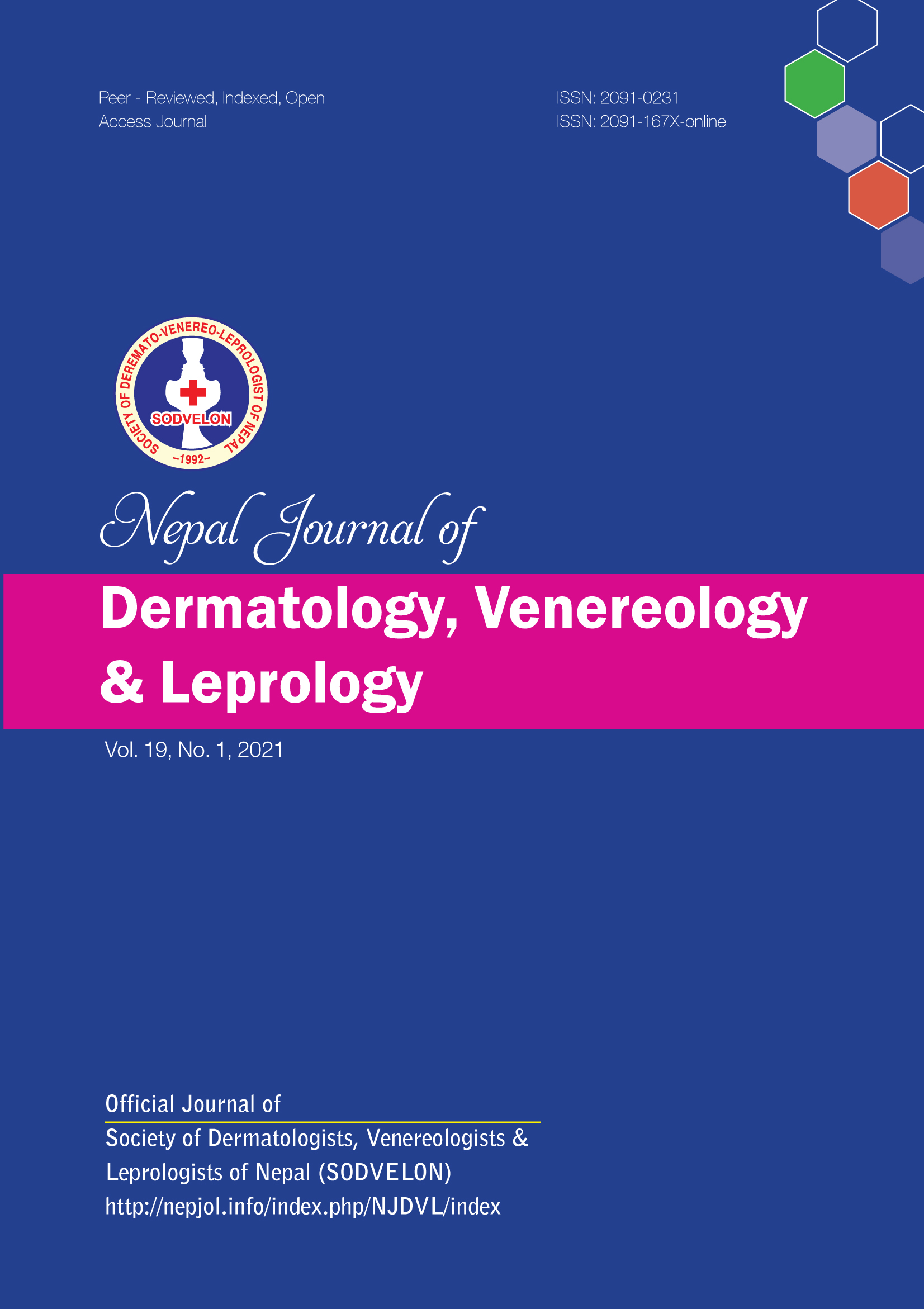The Histopathological Spectrum and Clinico-Pathological Concordance in 85 Cases of Skin Biopsy: A Single Center Experience
DOI:
https://doi.org/10.3126/njdvl.v19i1.33534Keywords:
Biopsy, Retrospective study, Skin diseaseAbstract
Introduction
Skin disease is common in developing countries but the spectrum varies widely. Skin biopsy is an important tool in confirming or establishing diagnoses in cases with diagnostic dilemmas. And, there may be a discrepancy between clinical and pathological diagnoses.
Objective
To determine the spectrum of histological diagnoses in skin disease and to know the consistency between clinical and pathological diagnoses.
Materials and methods
A retrospective review of histological and clinical diagnoses was done at a multi-specialty hospital. A total of 85 cases were included in the study. Clinical and histological data along with demographic details, the site of the biopsy was noted. Concordance between clinical and pathological diagnosis was determined as concordant, partially concordant and discordant.
Results
There were 60% female and 40% male patients out of 85 biopsies. The most common age group was 31-40 years and the mean age was 41.24 years. The most common histological spectrum was infectious group in 29.4%, followed by papulosquamous disorders in 22.4% and eczema in 12.9% cases. The concordance between clinical and pathological diagnosis was 60%, while partial concordance was seen in 16.5% and discordance was seen in 23.5% cases.
Conclusion
Skin biopsy is an important tool in confirming clinical diagnoses. There is a wide variation of histological diagnoses and concordance with clinical diagnoses may be increased with proper clinical history, physical findings and differential diagnosis.
Downloads
Downloads
Published
How to Cite
Issue
Section
License
Copyright on any research article is transferred in full to Nepal Journal of Dermatology, Venereology & Leprology upon publication. The copyright transfer includes the right to reproduce and distribute the article in any form of reproduction (printing, electronic media or any other form).




